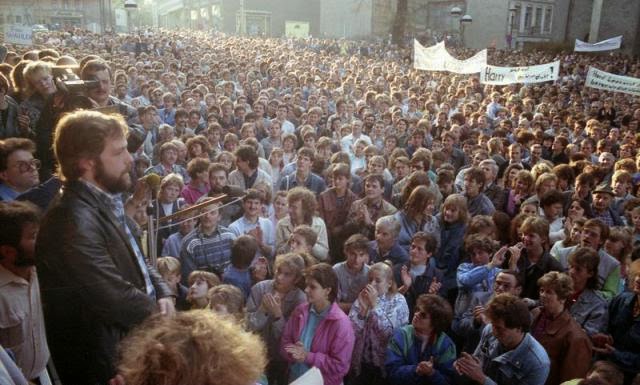Peaceful overthrow of an established government is an art, not a science. If you want to bring about a kindly revolution, you must know the nation and its people intimately, and act accordingly.
When the government of Iceland was peacefully overthrown, very little was heard or said about it on the world stage — other than in the financial media. Political change in Iceland was achieved peacefully, and apparently with a stable result. More
The revolutions of 1989 were successful overall in throwing off the puppet regimes of an oppressive occupying power, thus making self-determination more possible. Those revolutions were a largely spontaneous response to dominant zeitgeist that was felt fromEastern Europe to Tiananmen Square. The Chinese revolution was put down harshly by the PLA, but most of the puppet governments in Eastern Europe finally submitted to popular will.The events began in Poland in 1989,[2][3] and continued in Hungary, East Germany, Bulgaria, Czechoslovakia and Romania. One feature common to most of these developments was the extensive use of campaigns of civil resistance demonstrating popular opposition to the continuation of one-party rule and contributing to the pressure for change.[4] Romania was the only Eastern Bloc country to overthrow its Communist regime violently.[5] The Tiananmen Square protests of 1989 failed to stimulate major political changes in China. However, powerful images of courageous defiance during that protest helped to spark a precipitation of events in other parts of the globe. Among the famous anti-Communist revolutions was the fall of the Berlin Wall, which served as the symbolic gateway to German reunification in 1990.The Soviet Union was dissolved by the end of 1991, resulting in 14 countries (Armenia, Azerbaijan, Belarus, Estonia, Georgia, Kazakhstan, Kyrgyzstan, Latvia, Lithuania, Moldova, Tajikistan, Turkmenistan, Ukraine and Uzbekistan) declaring their independence from the Soviet Union and the bulk of the country being succeeded by the Russian Federation. __ Revolutions of 1989
The 1989 European revolutions that succeeded in a non-violent manner, were successful because the underlying societies were ready to throw off the foreign (Soviet) yoke. A critical mass of citizens created a chain reaction of mass effect which told the puppet leaders that they had best get out of the way.
GO READ THE WHOLE THING.

